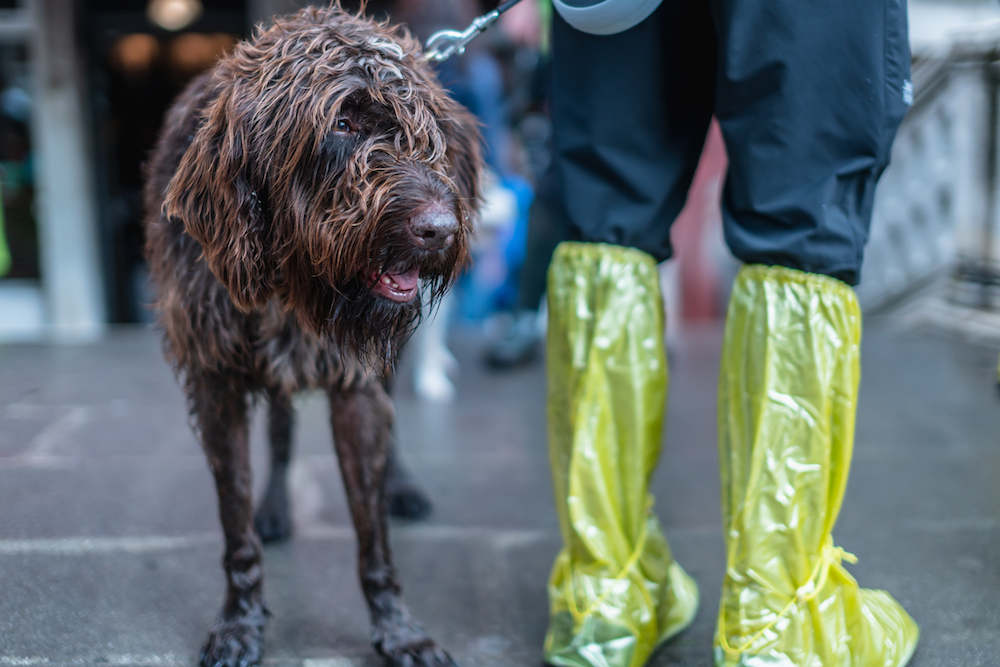
Hurricane season begins in June and ends in late November. Each year, weather experts predict higher numbers of tropical depressions, tropical storms, and hurricanes. Severe storms can cause flooding, high winds, and serious damage, even inland, where many people expect to be safe. Thankfully, advancements in weather technology make it easier to predict storms, giving those in hurricane-prone areas time to prepare. But while it’s good to prepare as soon as severe weather alerts are enacted, it’s far better to have a cohesive plan already in place for your whole family, including your pet.
Your pet can’t weather a storm alone--he depends on you. Here are five important ways you can help keep him safe and sound.
1. Get your pet a proper ID
In severe weather situations, pets can sometimes become separated from their people. That’s why it’s essential to properly ID your pet. She should have a collar and an ID tag with up-to-date information. However, collars can slip off or become damaged. Microchipping is the most secure way to ensure your pet can be identified if she gets lost. Remember to periodically log in to your microchip account to ensure your address, phone number and vaccine information are up-to-date. You should also have a current picture of him in your phone to help with identification. If you are traveling to safety with your pet in a carrier, make sure to attach your pet’s ID information to the outside of the carrier where it can be easily read by anyone who finds it.
2. Prepare a Pet Disaster Kit
Hurricanes can be unpredictable. Storms may linger in one place for a long time, and sustained damage may make it difficult to find supplies in the aftermath. Ideally, you should have a pet disaster kit prepared and ready to go at all times.
Disaster kits should have everything your pet will need to stay as safe and as comfortable as possible throughout the storm, including: a five-day (at minimum) supply of food and water for each pet; pet bowls; at least one week’s supply of pet medications; first aid pet supplies; pee pads (in case conditions don’t allow you to take your pet outdoors); and a list of pet-friendly lodging options. Pet medical records can often be found online, but it’s a good idea to include a hard copy in your kit.
We also recommend including a pet care sheet in your kit. If you and your pet get separated, this sheet will help a temporary guardian take the best possible care of him. It should include your pet’s feeding schedule, medical conditions, behavioral issues, general temperament (so they can tell if his behavior is “off”), likes and dislikes,and any other pertinent information a caretaker would find necessary or helpful.
3. Create an Evacuation Plan
It takes some extra time to evacuate a pet, especially if he’s uneasy or frightened. This makes it all the more essential to plan ahead. Learn your evacuation zone so you can easily determine when you might need to evacuate. Adapt your pet well in advance to carriers and car rides. If you have a prearranged evacuation destination, learn at least two alternate routes to get there. Evacuations can sometimes be sudden, so keep your emergency kit by the door and make sure your car has gas.
4. Source Pet-Friendly Accommodations
If you must evacuate, you will need to find a place to stay that will welcome both you and your pet. Having a “go-to” source for pet-friendly accommodations can make all the difference. TripsWithPets features thousands of pet-friendly accommodations, complete with specific pet policies, as well as easy, on-line booking.
5. Find Alternate Safe Havens for Your Pet
Contact local evacuation shelters ahead of time to find out whether they allow pets. Unfortunately, most do not, and those that do have a limit on the number that are allowed. It’s a good idea to research boarding facilities, vets, and animal shelters that may provide a safe haven for your pet. In the event that you cannot shelter with them, you’ll know there’s somewhere safe and comfortable they can go.